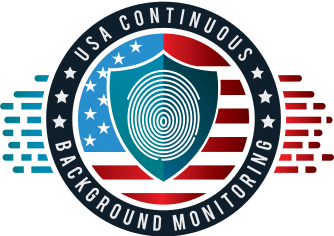Introduction: Understanding the Importance of Security Clearance in Government Hiring
Many coveted careers within the federal government require obtaining and maintaining a security clearance. This pre-employment screening process verifies a candidate’s trustworthiness to protect classified national security information and assets.
Clearances are issued at various classification levels: Confidential, Secret, or Top Secret, depending on the sensitive data and systems individuals will access within specific job roles. Given the critical importance of upholding national and economic security, clearing this hurdle is necessary for hundreds of occupations.
The process of obtaining clearance can take six months or longer. It involves submitting exhaustive personal information and financial records and undergoing comprehensive background investigations. With advanced planning and diligence, candidates can navigate this piece of the hiring journey strategically to land their ideal government position.
The Steps to Obtaining Security Clearance for Government Jobs
Understanding the sequence of clearance attainment empowers applicants to properly time job applications and management expectations. Here are the standard steps:
• Choose Careers Requiring Clearance – Research vacancy announcements stipulating necessary access levels.
• Accept Job Offer Conditioned on Clearance – Express interest, interview, and receive verbal/written tentative offer pending vetting.
• Complete SF-86 Form – Submit exhaustive personal disclosure statement online in e-QIP for investigation.
• Supply Documentation – Provide ID/documents confirming identity, employment records, and residence history.
• Undergo FBI Fingerprint/Background Check – Consent to identity verification and criminal records search.
• Complete Interviews – Discuss information/documentation provided with contracted investigators.
• Enter adjudication – Eligibility is determined by reviewing all case material gathered during the investigation.
Progress is systematic, but assured approval unlocks an enriching government career chapter ahead.
Understanding the Different Levels of Security Clearance
Knowing the three-tier access classification system empowers shaping experience to desired roles:
1. Confidential protects non-sensitive information. Requires basic personal/criminal checks. 2. Secret permits access to material jeopardizing national/economic security. Screening includes character interviews.
3. Top Secret grants the highest trusted access to nuclear secrets and covert operations. Most thorough reviews incorporate financial and foreign influence considerations.
While all clearances vet character/loyalty, Top Secret involves the greatest depth, as even minor issues warrant the highest scrutiny for such sensitive positions. Tailor background accordingly.
Evaluating Your Eligibility for Security Clearance
When initiating the clearance process, individuals conduct self-assessment to evaluate chances sincerely:
• Citizenship/Immigration Status – Certain visas/non-citizen status prohibit clearance approval. • Foreign Influence Considerations – Extensive family/economic ties abroad increase investigation scrutiny.
• Criminal Record – Even minor misdemeanors require disclosure and could impact eligibility depending on circumstances.
• Mental Health History – Institutionalization, diagnosis/treatment of certain conditions invoke additional review.
• Substance Abuse – Candid use and thorough rehabilitation documentation essential for illicit drug past.
• Associations – Connections warranting concern like possible radicalism/subversive groups invite deeper review.
An honest evaluation supports preparing strong documentation/explanations to maximize the chances of approval.
Gathering and Submitting Required Documentation
Acquiring necessary paperwork ahead of expedites the process:
• SF-86 – Personnel security questionnaire initiates investigation and core document. Complete thoroughly in e-QIP.
• References – Three peers vouching for character/conduct over the past 3-7 years with full contact details.
• Employment Records – Job descriptions, performance reviews, tax returns, and separation info for the past 10 years.
• Education Records – Diplomas and transcripts for schools/training listed on SF-86. • Residence Records – Leases, utility bills, landlord contact info proving addresses over 7 years. • ID Documentation – Passport/Driver’s License for identity verification along with original Social Security card.
Proactively collecting files/contacts prevents delays from chasing scattered records when investigators require them.
Undergoing Background Investigation and Interviews
Once initiated, expect a comprehensive review incorporating:
• Reference Interviews – Investigator interviews provided personal/professional references. • Employment Verification – Former managers contacted to confirm employment dates/duties. • Education Verification – Schools confirming enrollment/degree information supplied. • Neighborhood Canvassing – The neighborhood visited residents to check for past conduct. • Records Research – Review criminal, financial, mental health, and other files thoroughly. • Applicant Interview – Discussion providing further information/context for investigation findings.
Cooperate fully and promptly answer follow-ups and corrections to promote favorable determination. Be confident but honest.
Facing Adjudication and Final Determination Process
Upon completing the fieldwork portion, cases enter the final adjudication stage where:
• Adjudicators Review – Specialists analyze all case details to assess whether risks warrant access approval given position sensitivity.
• Risk Mitigation – Candidate may address potential issues through personal/financial disclosures limiting vulnerability concerns.
• Final Decisions – Eligibility Approved (Interim or Final Clearance), Denied, or Revoked for current holders, depending on the severity of identified red flags.
• Appeal Options – If denied, the candidate possesses due process rights to appeal the decision and request a formal reconsideration review.
Adjudication concludes a thorough, impartial suitability review ensuring the protection of national defenses. Approval opens career paths!
Tips to Enhance Your Candidacy During the Government Hiring Process
Beyond clearance, optimize every stage through active application components: • Showcasing Relevant Skills and Experience
Tailor federal resume highlighting achievements directly assisting agency mission like analytical skills, languages, and scientific expertise.
• Researching Agency Mission
Demonstrate commitment to the organization by discussing specific programs candidate’s qualifications would support protecting the nation’s interests.
• Learning Application/Interview Process
Study vacancy announcements thoroughly and practice interviewing to highlight transferable qualifications meeting position requirements.
• Security Clearance Preparation
Anticipate investigator interview questions and draft clear, concise explanations to reassure character while preserving honesty for complicated incidents.
• Connecting within Government
Networking introduces recommendation advocates while informing career choices coinciding with ongoing agency initiatives stimulating growth.
Promoting personal fit and investment maximizes potential throughout the hiring sequence and beyond on the job.
Conclusion: Securing a Government Job with Security Clearance is Attainable with Preparation and Perseverance
The federal hiring process is rigorous to safeguard sensitive operations, but rewarding careers await those driven to succeed. While approval remains ultimately in the hands of adjudicators, individuals maintain control over the presentation of qualifications supporting the nation.
Through comprehensive research, organization, and self-aware disclosure, security clearance and placement milestones grow surmountable. Now equipped with navigating each stage strategically and with patience, the journey yields abundant returns of public service opportunities and fulfillment, aligning talents for the greater good.

